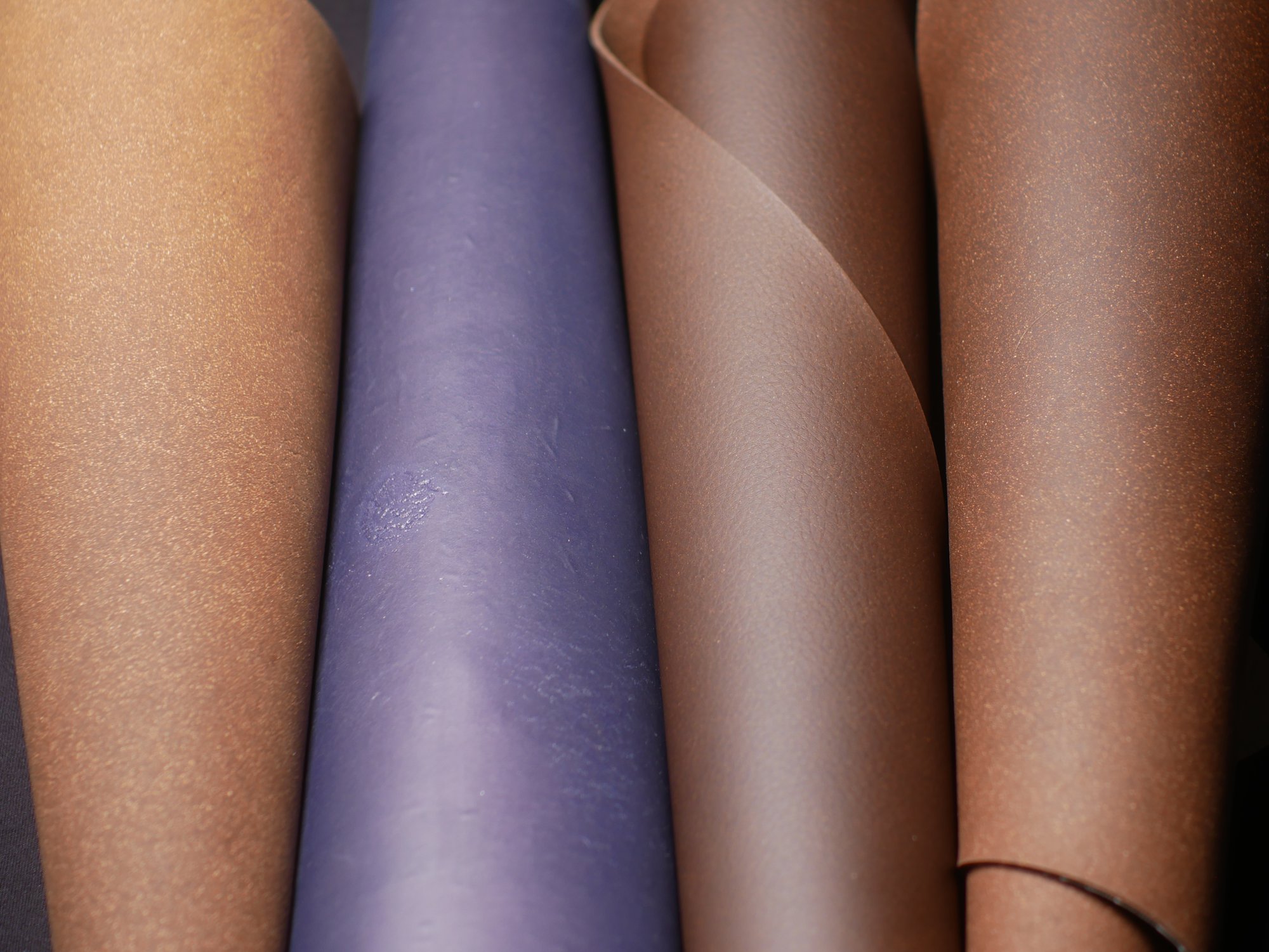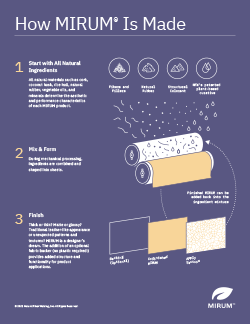How MIRUM® is made
We get a lot of questions about how MIRUM is made, so we wanted to shed light on the process with this post. MIRUM is unique in its ability to deliver functionality, durability, and aesthetic beauty without relying on petrochemical or synthetic inputs. This is in stark contrast to many other plant- or bio-based materials.
Those materials, while having a biomass component, must rely on plastics to deliver their functionality; they are “petroleum enabled” materials. A PU coating on a plant-based substrate is not the answer to the soft good industry’s sustainability and circularity challenges. The answer to those challenges has to come from a plastic-free solution; plant-matter as a material feedstock absolutely dwarfs the scale of petrochemical plastics. Not only is plant-matter near inexhaustible on earth, it is a source of boundless beauty and delight and when kept free of synthetic additives it is inherently circular in Nature’s never ending nutrient cycles.
Enough about how MIRUM is different from other new materials. Let’s take a peek behind the scenes and learn how NFW makes MIRUM!
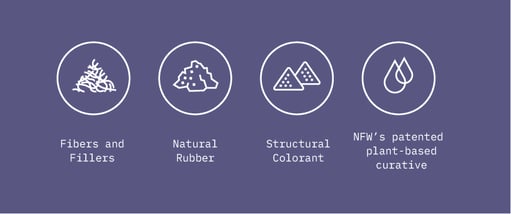
Ingredient Selection
Our process begins by selecting the right natural ingredients for the desired use-case and aesthetic profile. Different ingredients impart the finished product with different qualities and attributes. For example, MIRUM for footwear needs to be strong and durable to wear, so ingredients are selected to help impart these physical characteristics. Nature provides a renewable, abundant, and diverse offering of inputs to select from to deliver the functionality and aesthetics you desire. MIRUM is made with the utmost stewardship of nature in mind, for many of our ingredients this means using by-products of other industries. An example of this is using coconut husk fiber (called coir) which is a by-product of producing coconut water and oil. When our inputs come from a managed forest, such as natural rubber and cork (here again, MIRUM uses cork powder, a by-product of making wine stoppers), we use Forest Stewardship Council (FSC) certified ingredients.
An important ingredient in MIRUM is Natural Fiber Welding patented plant-based curative. In material science, the curing process imparts a material with durability, toughness, and/or enhanced resistance to premature degradation. The chemistry used in the curing process is called a curative. Our patented curative is entirely plant-based and sourced from renewable feedstocks. This is in contrast to standard curatives for natural rubber which rely on petrochemical additives and sulfur chemistry which result in an irreversible reaction.
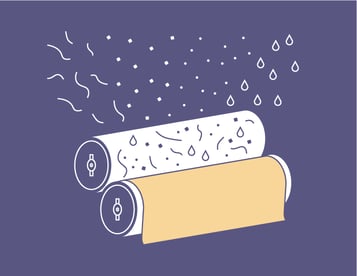
Mix & Form
Once the right ingredients have been selected, they are dry-mixed and mechanically formed into the desired shape. The MIRUM manufacturing process does not require additional water inputs besides what is represented in the natural ingredients. This means there is no effluent (e.g. wastewater) discharge generated from the making of MIRUM.
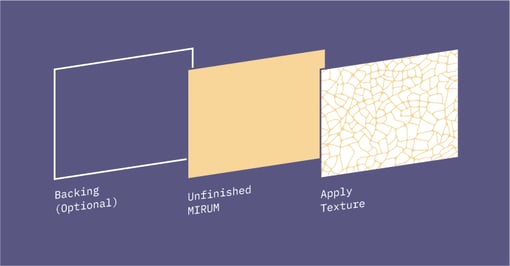
Finish
During this step, an optional natural fabric backer can be added to the MIRUM sheet and a texture is embossed on the surface, to give MIRUM its final look and feel. The possibilities for surface embossing are basically endless, MIRUM is an extension of your creative expression. No petrochemical adhesives are used to ‘glue’ the fabric backer to MIRUM. The fabric backer and MIRUM are molded together, this is why NFW often describes MIRUM as a composite material.
Now that you've learned how MIRUM is made, let’s make something beautiful together.
Header photo credit: Mike Firman
